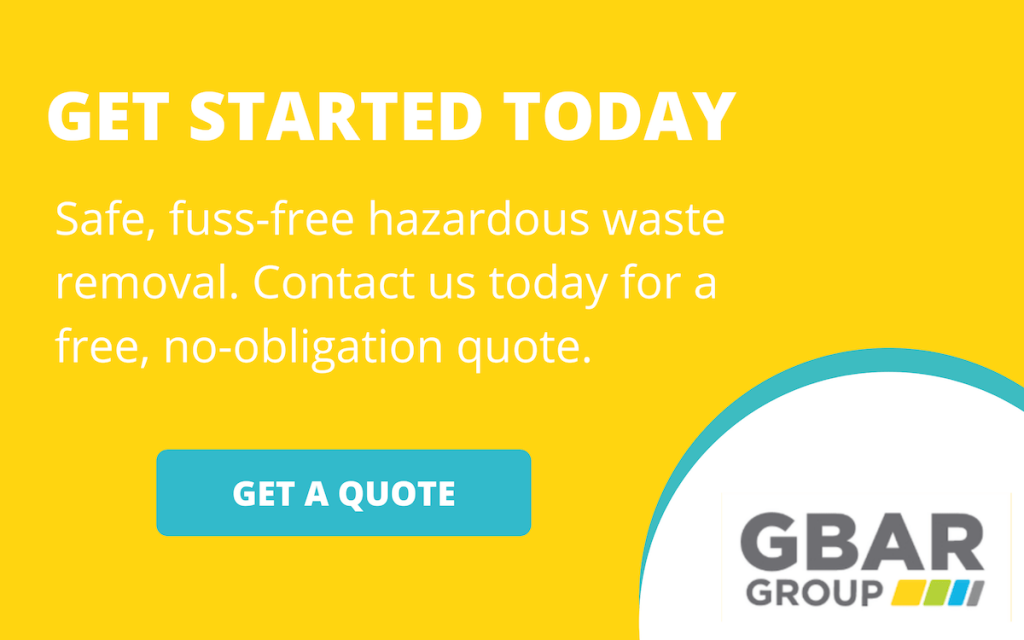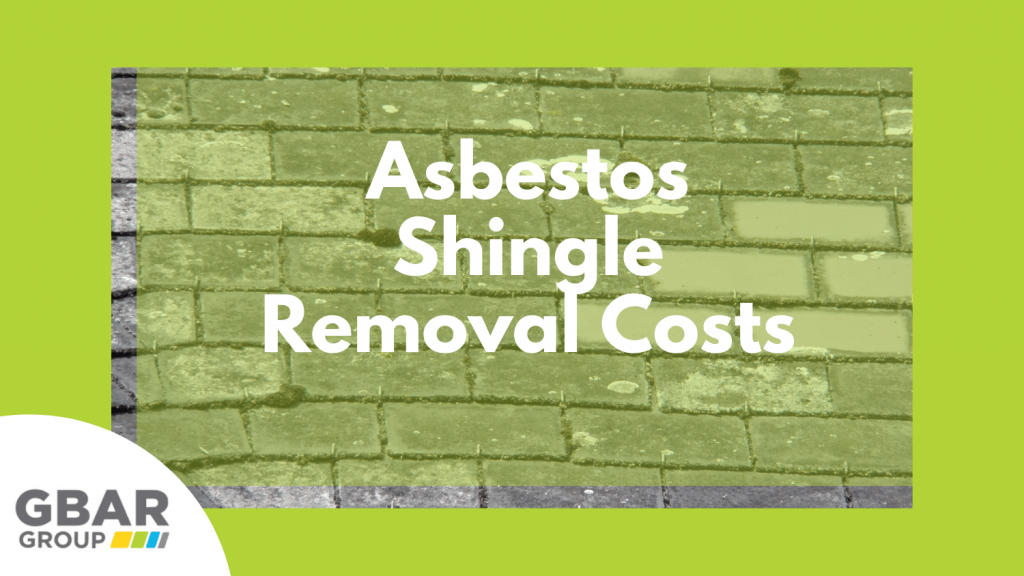
Asbestos shingles were a common roofing construction material manufactured and utilised between the 1930s and the 1990s. Today, the use and production of asbestos products face heavy restrictions due to the countless health effects associated with asbestos exposure.
Asbestos was officially banned from use and sale in Australia in 2003. However, after the bans were placed on asbestos products, most materials already used were left in place. As a result, it is estimated that almost one-third of all Australian homes contain asbestos in one form or another.
Asbestos shingles are among the most common asbestos-containing products used on residential properties. Asbestos shingles were a favourite during the peak of asbestos use, as they were cheap, easily accessible, and provided cement boarding with extended beneficial properties. While asbestos shingles are durable, they do tend to wear with time. Given asbestos shingles installation occurred at least over 30 years ago, there are now thousands of Australian homes with old asbestos roofing materials that likely require immediate removal.
So, how much does asbestos shingle removal cost? That’s the big question. This article will discuss where asbestos shingles were used, how they can be safely removed, the costs of both asbestos shingle removal and asbestos siding removal.
What are Asbestos Shingles?
Asbestos shingles are roof or wall shingles made with asbestos cement board. Mass-produced between the 1930s and 1990s, asbestos shingles were a common roofing material for residential properties. Asbestos shingles were a popular alternative to other materials as they provided resilience, durability, and insulation properties.

Manufactured from a combination of asbestos fibres and hydraulic cement, asbestos-cement roof shingles were known for being rigid, durable, and somewhat fireproof. Asbestos shingles were sold based on resisting warping, water damage, and providing unprecedented roofing protection. Asbestos shingles were very popular up until the 1980s; offering a superior, cost-effective alternative to other roofing materials.
By the early 1980s, the growing health concerns associated with asbestos were increasing, with the medical industry and the general public becoming aware of hazardous “asbestos dust”. Initially, the main concern was on large quantities of dust created by asbestos manufacturing factories. However, it soon became apparent that exposure to asbestos fibres in any capacity was not safe.
Asbestos-related illnesses include mesothelioma, asbestosis, lung cancer, and pleural plaques. Asbestos-related diseases develop from asbestos exposure, where someone inhales or ingests asbestos fibres into their lungs, where they become trapped. There is no “safe” amount of asbestos exposure. Asbestos fibres do not break down in the lungs, causing permanent scarring, and over time, develop into asbestos-related diseases.
Asbestos shingles are an asbestos-containing material bound tightly by cement. While asbestos shingles do not pose the same threat as friable asbestos products, damaged, broken, or deteriorating shingles can release asbestos fibres and be very harmful. It’s for this reason that houses containing damaged or worn asbestos shingles should undergo safe removal.
Asbestos Shingle Removal Process
Asbestos shingles are a mixed combination with cement and when intact and in good condition, are generally considered non-friable and not hazardous. However, heat, weather, and ageing can weaken non-friable asbestos shingles to the point of the materials becoming friable. This can also occur during the removal process. As soon as asbestos shingles are disturbed, there is a risk of the materials becoming friable and asbestos fibres releasing into the air.
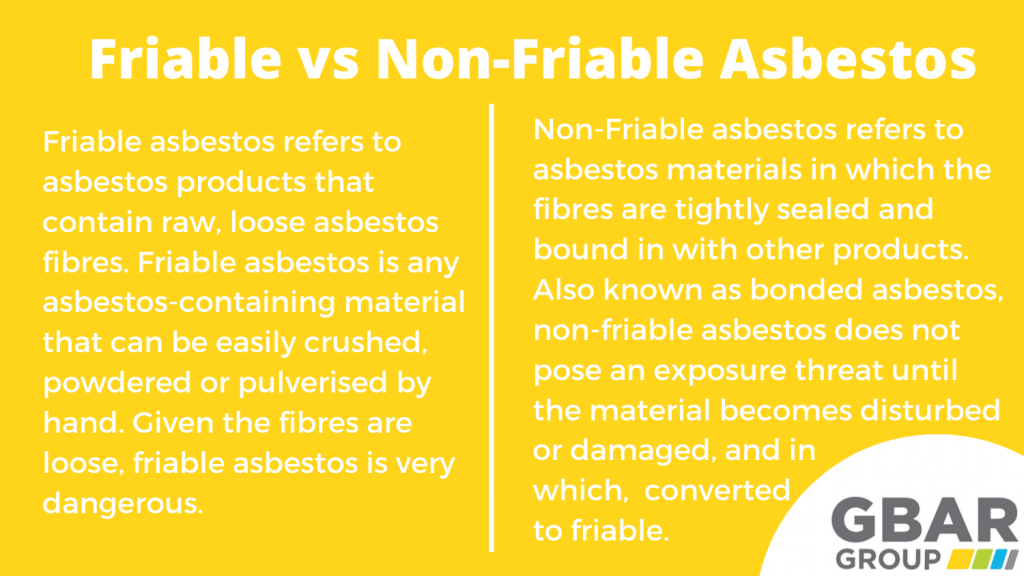
The fragility of handling asbestos shingles means that they should not be disturbed without the appropriate safety measures put in place. Avoid breaking, sanding, cutting, drilling, and sawing asbestos shingles. In some states of Australia, it is technically legal (though not recommended) for an unlicensed person to remove up to 10sqm of non-friable asbestos materials. However, as soon as it is more than 10sqm and the materials are in a compromised condition, the job must be completed by a professional.
Many houses built before 1989 will contain asbestos shingles. While safety and health are the primary concern, sometimes full removal is not necessary. The toxic asbestos fibres will remain sealed if shingles are not cut and in good condition. An asbestos abatement company will assess asbestos shingles, test materials for confirmation, and then decide the best possible solution for your home. If full removal is not required, an asbestos technician may use encapsulation practices to ensure asbestos fibres are not released.
Asbestos Shingle Removal Cost
Asbestos shingle removal cost is determined by a number of critical and changeable factors. At the time of writing, the average removal costs in Australia are roughly between $50-$150 per square meter, depending on several different factors.
Asbestos shingle removal cost will depend on the square footage of the shingles and the condition of the materials. The more damaged and dangerous asbestos shingles are, the more labour there will be required to keep the environment as safe as possible during the removal process.
Not only will asbestos shingle removal costs vary depending on the size and condition, but the contractor will also influence them. There is a lot of labour that goes into minimising the risks during the process of asbestos shingle removal – asbestos abatement companies can increase the costs of asbestos removal depending on the scope of the project.
The best course of action when considering asbestos shingle removal costs is to have a professional assess the site and develop a management plan immediately. Reputable companies will not lock in a quote until they have adequately evaluated the materials, confirmed asbestos, and worked out the safest route for removal and disposal.
How Much to Remove Asbestos Siding from A House?
Often, older houses will contain asbestos siding. Asbestos siding typically looks like asbestos shingles, however, placed on the exterior sides of the house. Asbestos shingle siding is generally very brittle, and the back may be black and have the appearance of tar paper. The front of the asbestos siding appears with a grainy-like texture. Asbestos siding was initially manufactured as an alternative to other siding materials, and so the design can often look like unsuspecting materials. For this reason, the asbestos siding will likely need confirmation testing before removal.
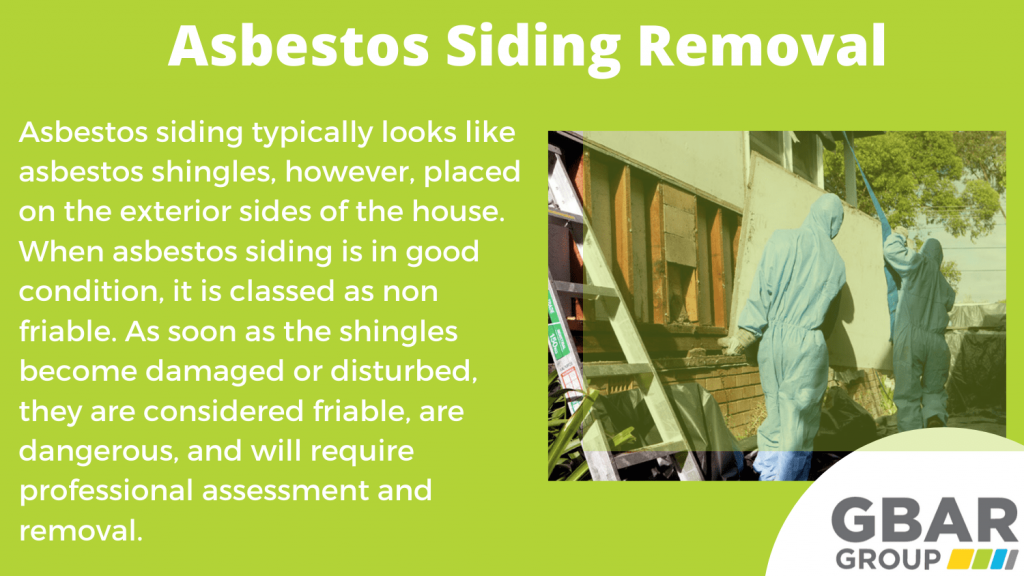
Much like asbestos roof shingles, when asbestos siding is in good condition, it is classed as non-friable. As soon as the shingles become damaged or disturbed, they are considered friable and dangerous. Given the brittle nature of asbestos siding, it is not safe to attempt removal without the assistance and advice of a professional asbestos technician.
The cost of removing asbestos siding from a house depends on several factors. These factors include the condition of the asbestos siding, the scope of the project, how simple the removal process will be, and the proximity of the nearest appointed disposal point. Depending on these factors, asbestos siding removal costs average from $50-$150 per square meter and can cost $2500+ for the complete removal of external siding projects.
Tips for Hiring An Asbestos Removal Professional
When it comes to removal costs for asbestos shingles and asbestos siding, there is no one-size-fits-all pricing list. All of the factors listed above will ultimately influence how much you can expect to pay for asbestos removal.
Be wary of contractors who are willing to give you a locked-in price for asbestos removal without assessing the property beforehand. Several interchangeable aspects of a site can determine the scope of a project. An experienced and trustworthy removal company will inspect, advise, and provide an accurate quote to avoid any unexpected surprises when it comes time to pay the bill.
While it might be tempting to attempt DIY asbestos shingle or siding removal, there are some things to consider. Firstly, doing the job yourself can leave you in legal trouble if you don’t adhere to your locale’s removal obligations. Secondly, it is nearly impossible for the average homeowner to provide the same standard of safety and quality workmanship when it comes to asbestos removal. Thirdly, when you conduct DIY asbestos removal, you put yourself, your family, and your neighbours at risk of hazardous asbestos inhalation.
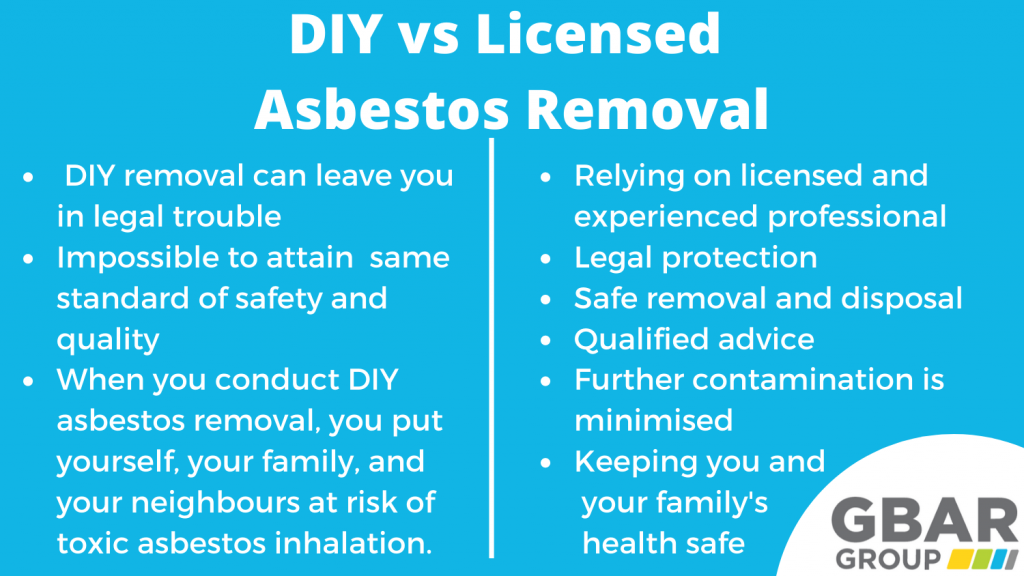
Hiring an asbestos removal technician who is both experienced and licensed in asbestos shingle removal will protect you from violating the strict asbestos removal regulations in Australia. For this reason alone, hiring a professional is worth the extra expenses.
Engaging with an asbestos abatement company also means relying on a professional to maximise safety during the process of removal and disposal. Removing and handling asbestos is a hazardous process – don’t run the risk of exposing yourself or anyone around you; call the professionals.
GBAR Group are the leading expert in asbestos removal and hazardous material management. We work closely with each client to ensure their property is kept entirely safe and not contaminated with asbestos fibres. Licensed nationwide, the team at GBAR are qualified, highly competent, and very experienced in every asbestos removal and abatement. Get in touch with one of our technicians today to discuss an inspection for asbestos shingle and asbestos siding removal.
